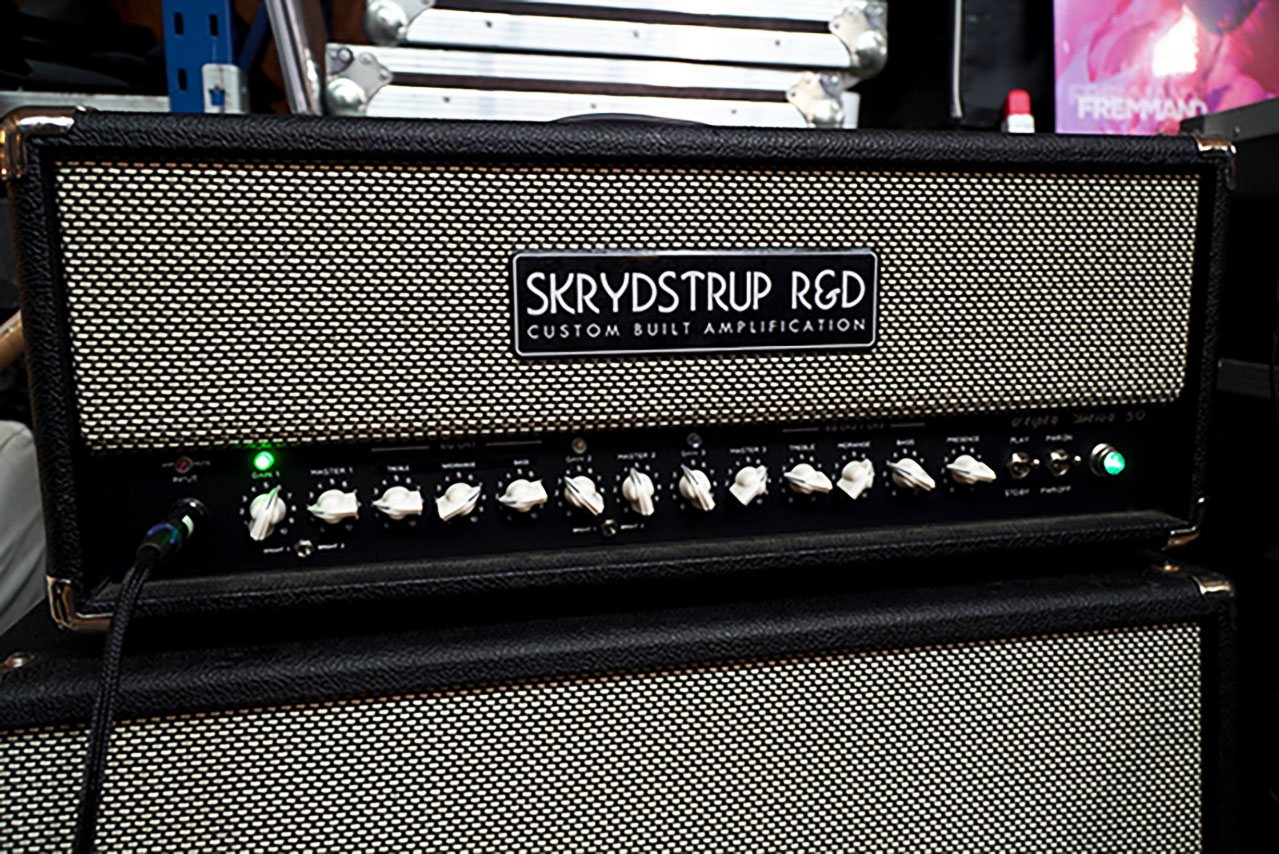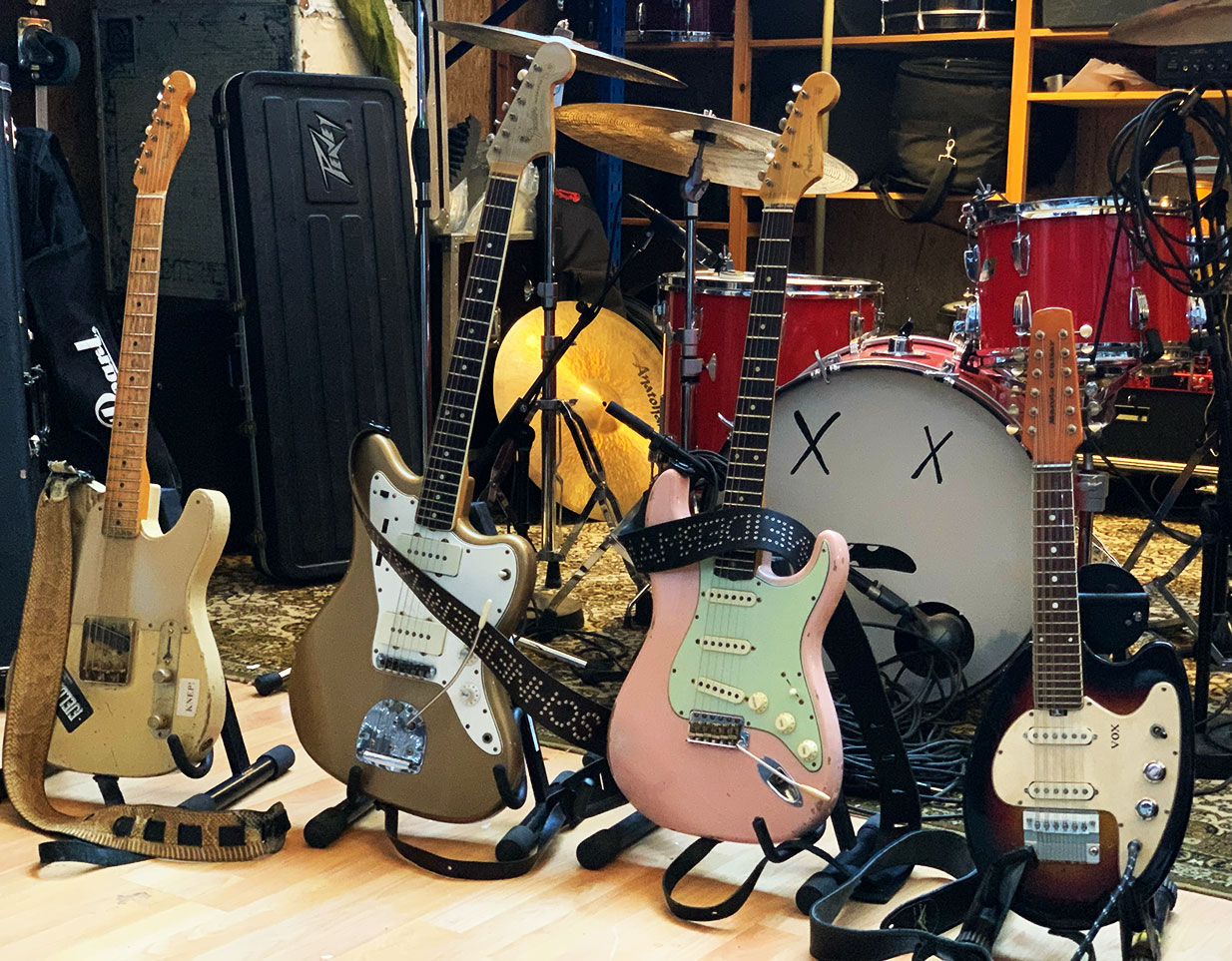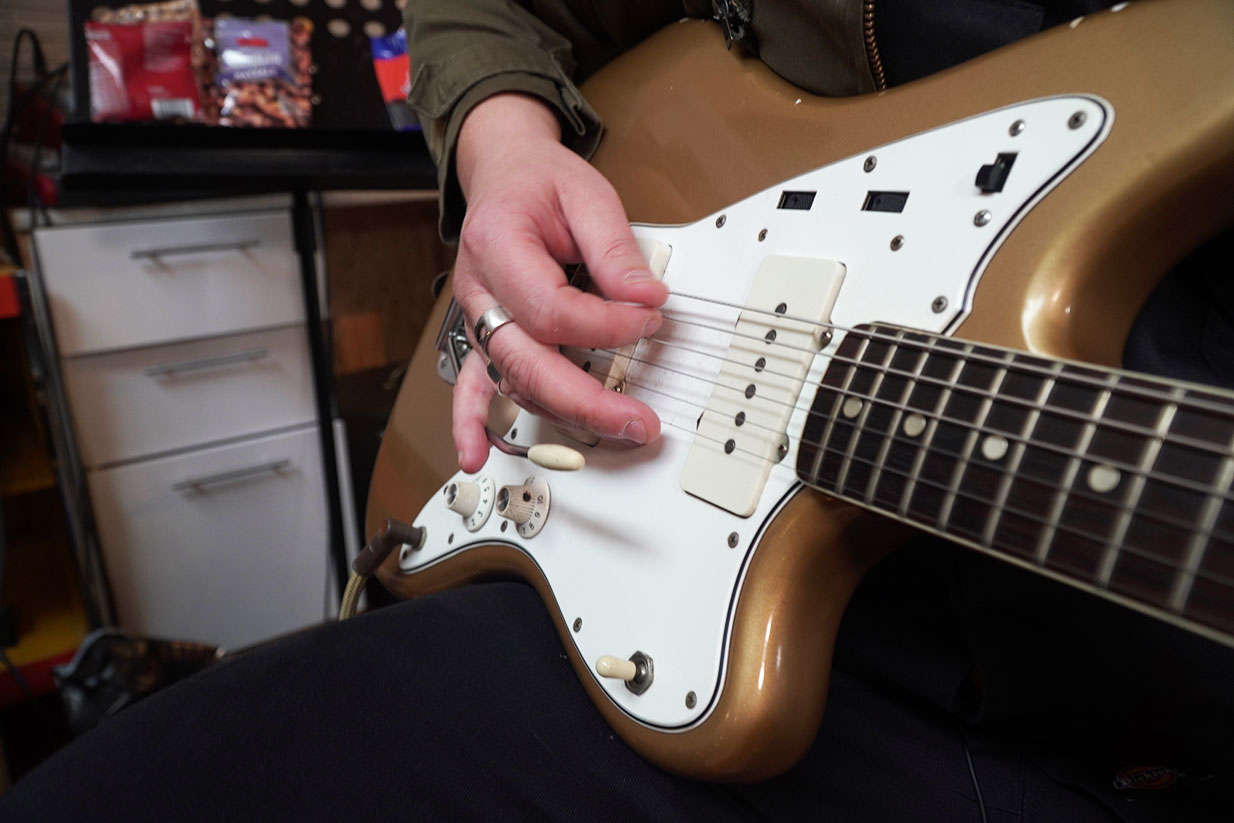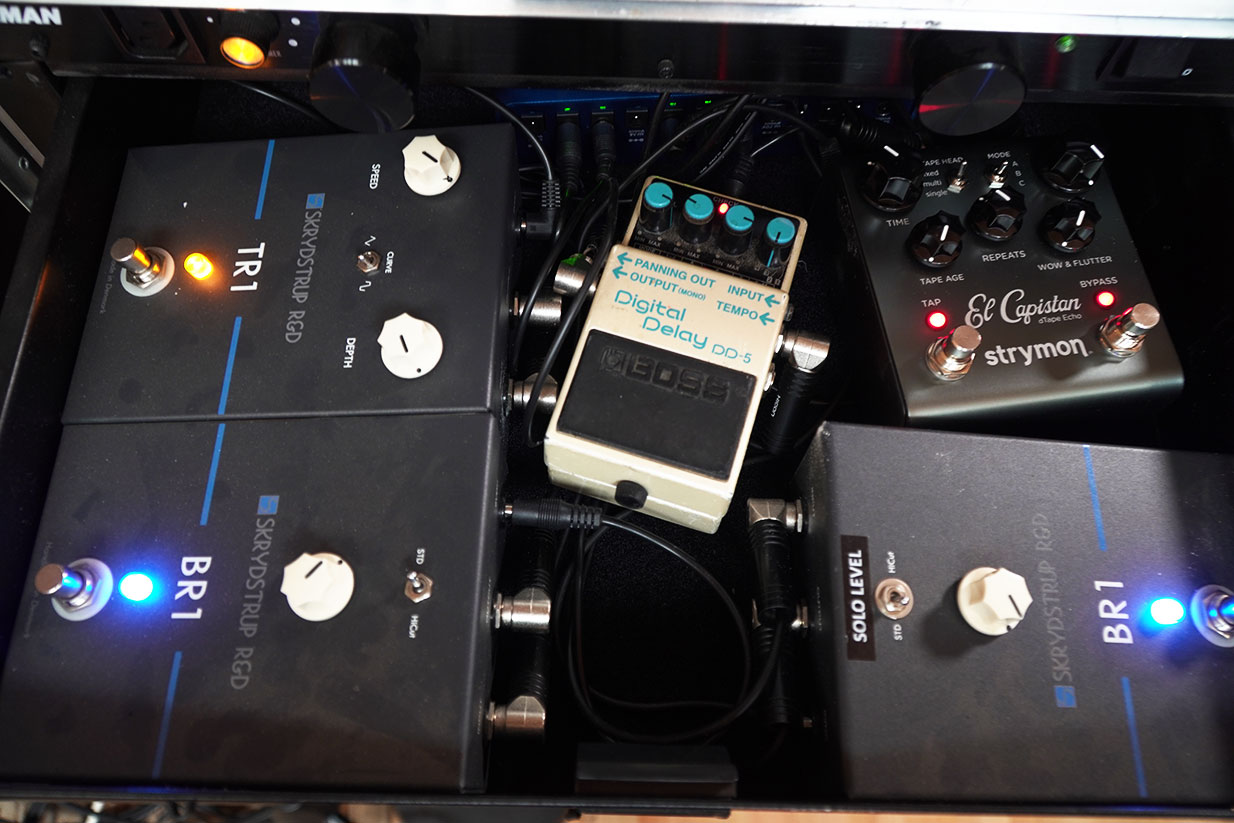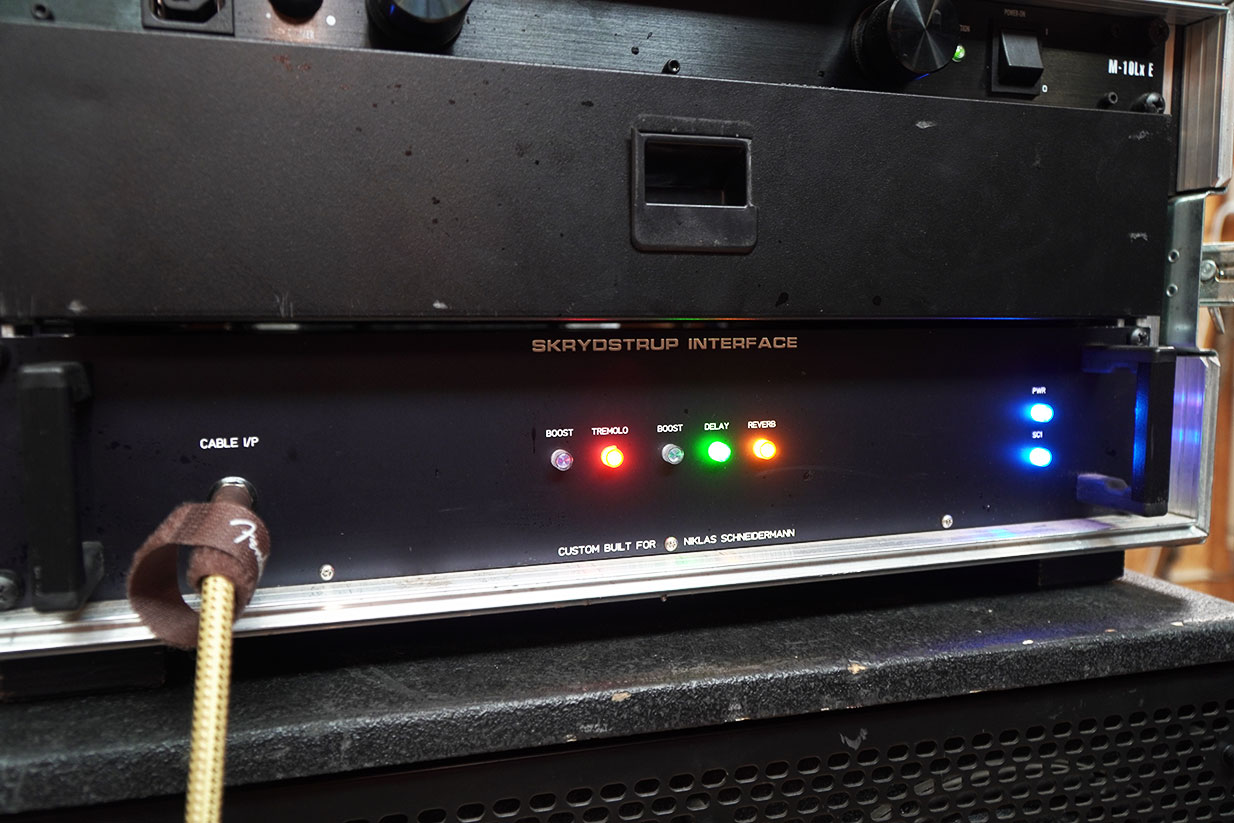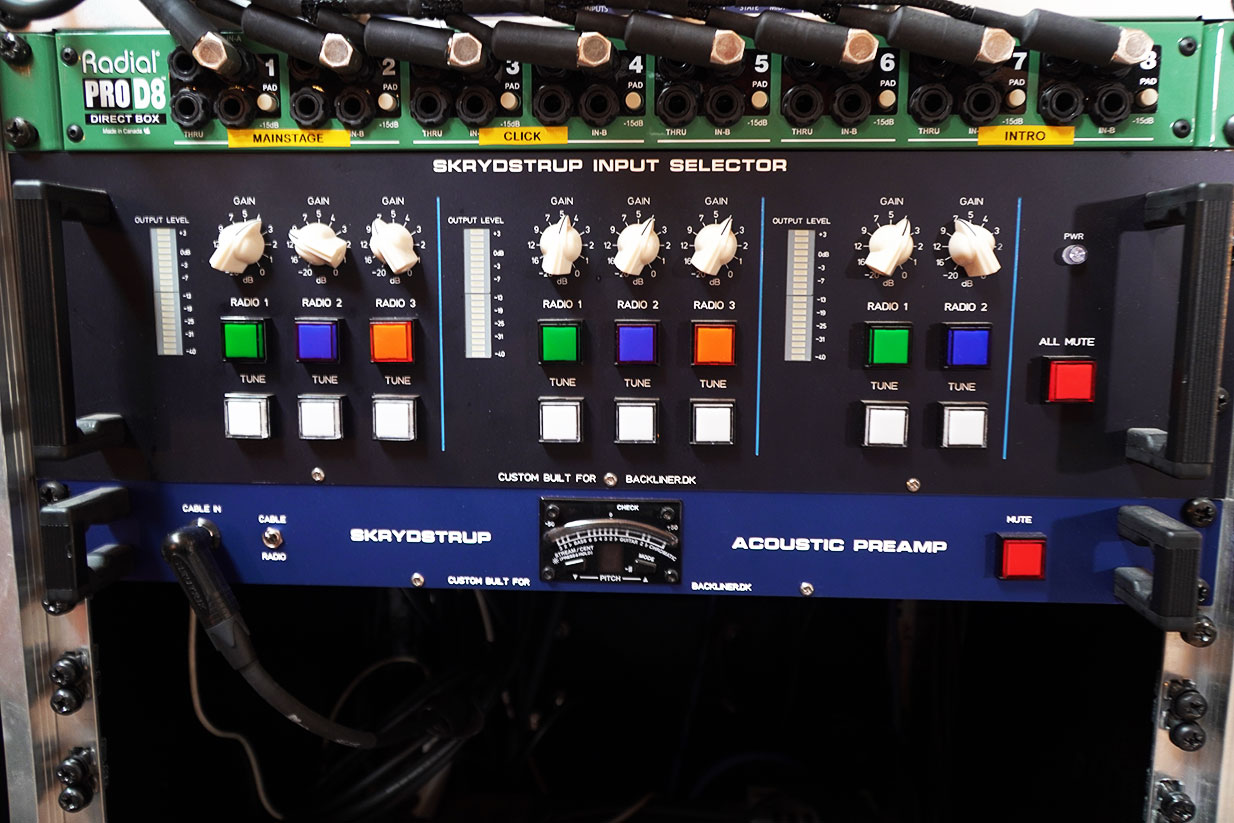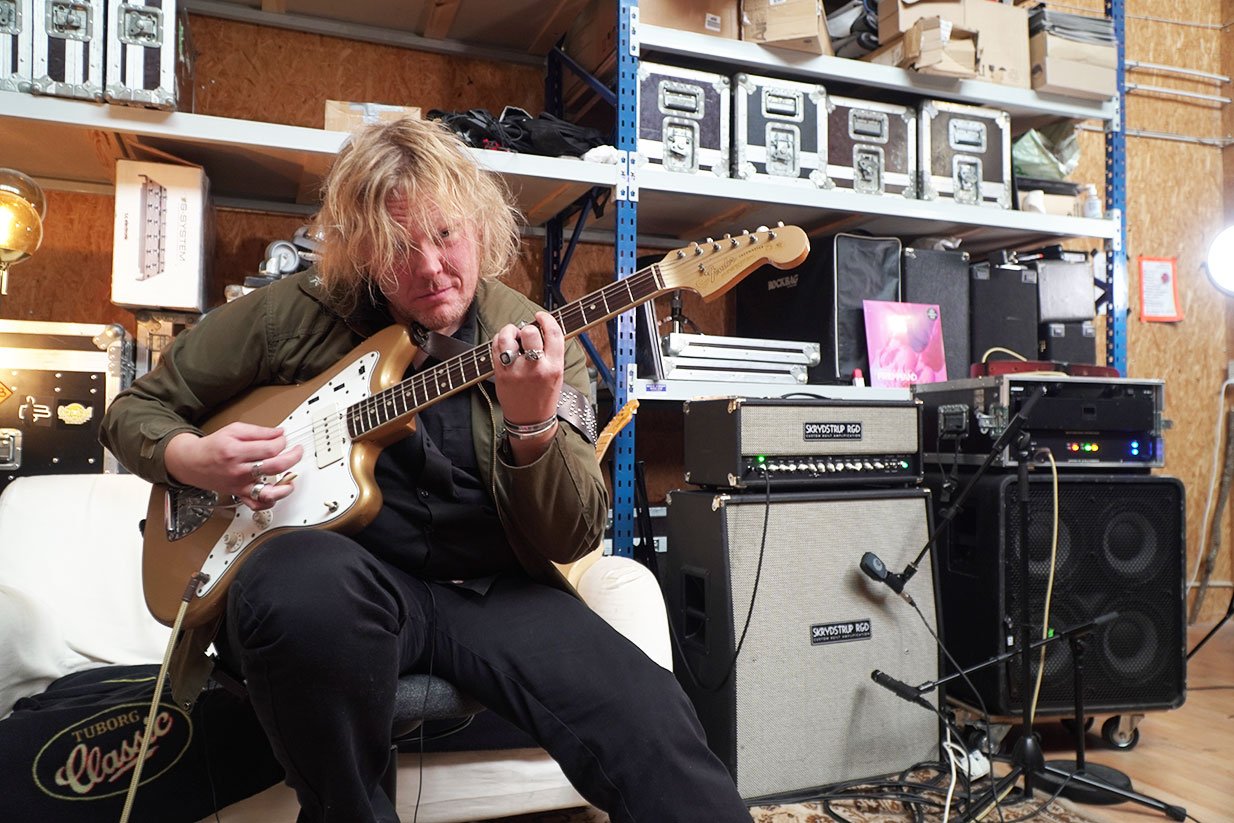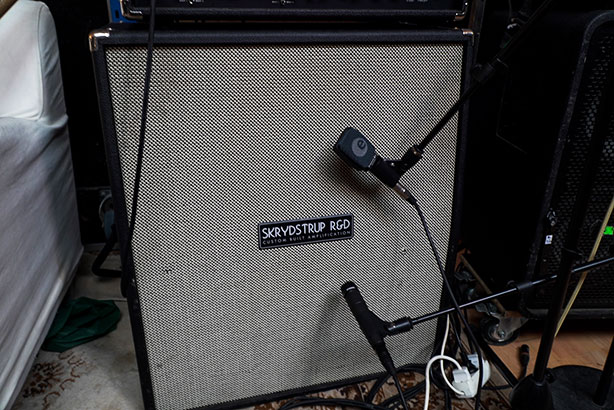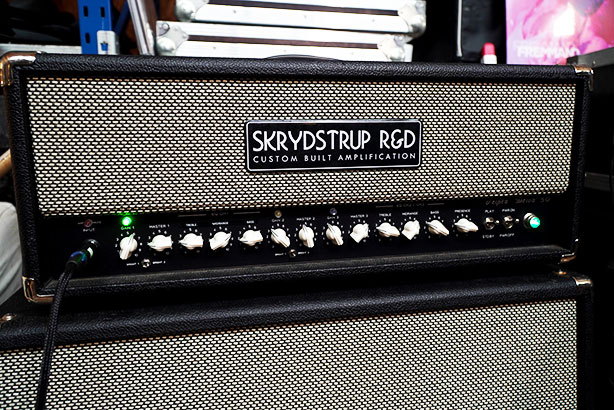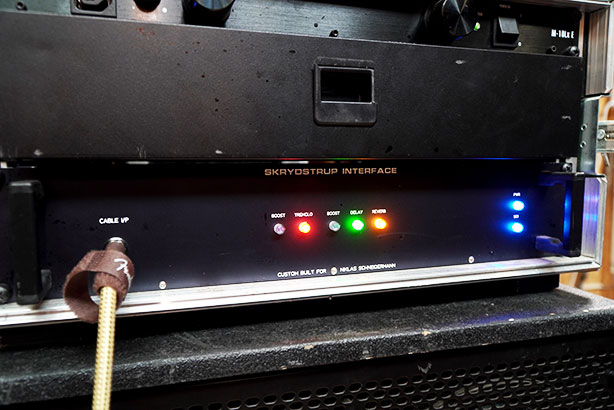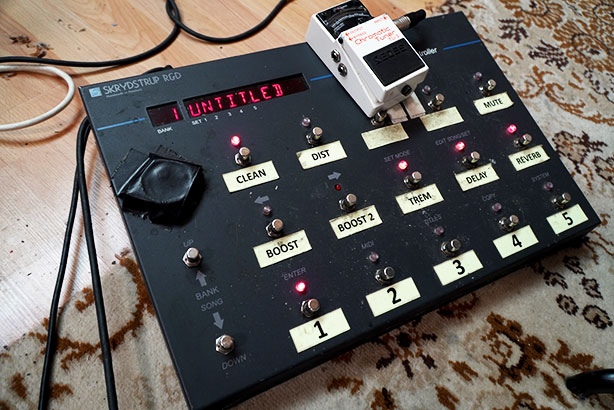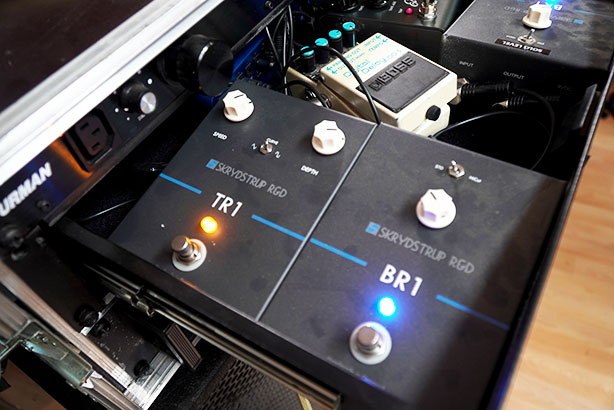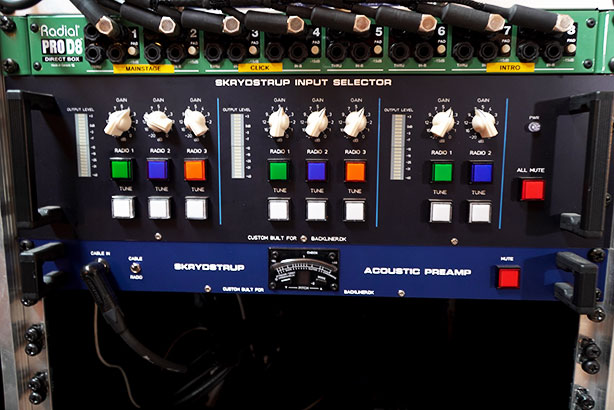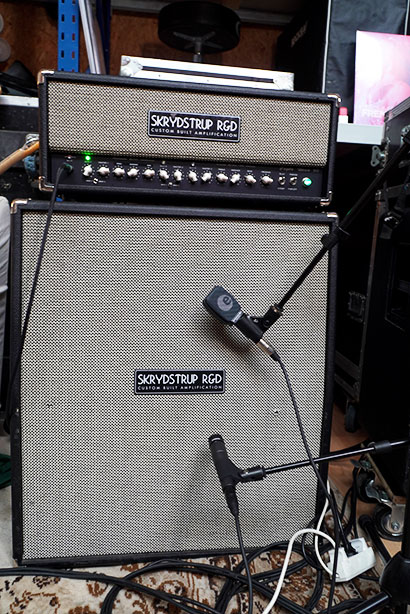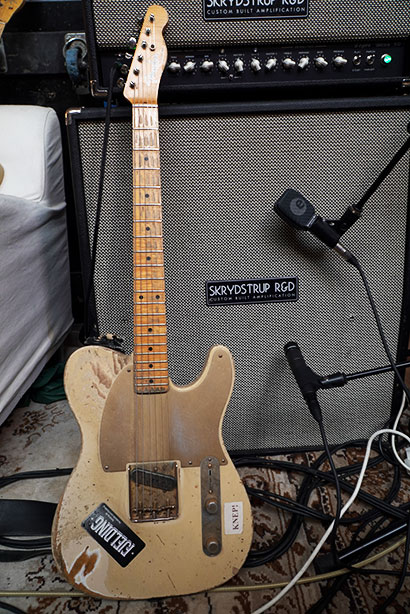As guitar players, we are always looking to improve our tone.
We all love effects that can help us create new inspiring sounds, but how do the Stomp Boxes we add to our pedalboard affect the sound when they are bypassed?
Today I want to talk to you about True Bypass.
True Bypass has been hyped the past many years as a really cool thing. In my world it’s probably the worst thing you can do to your sound, because you’ll have total impedance chaos on your pedalboard.
Let me tell you why.
As an example – imagine that you have five Stomp Boxes. Each with half a meter of cable between them. I know you don’t normally have that long cables between each of your Stomp Boxes, but for the sake of the argument try and imagine the setup I just described.

Between each Stomp Box is half a meter (0,5m) of cable, which in total is 2 meters. You have 6 meters of cable from the guitar to the first Stomp Box, and you have 6 meters of cable from the last Stomp Box back to the amp. So the math would look like this:
2 + 6 + 6 = 14
So, in total you have 14 meters of cable.
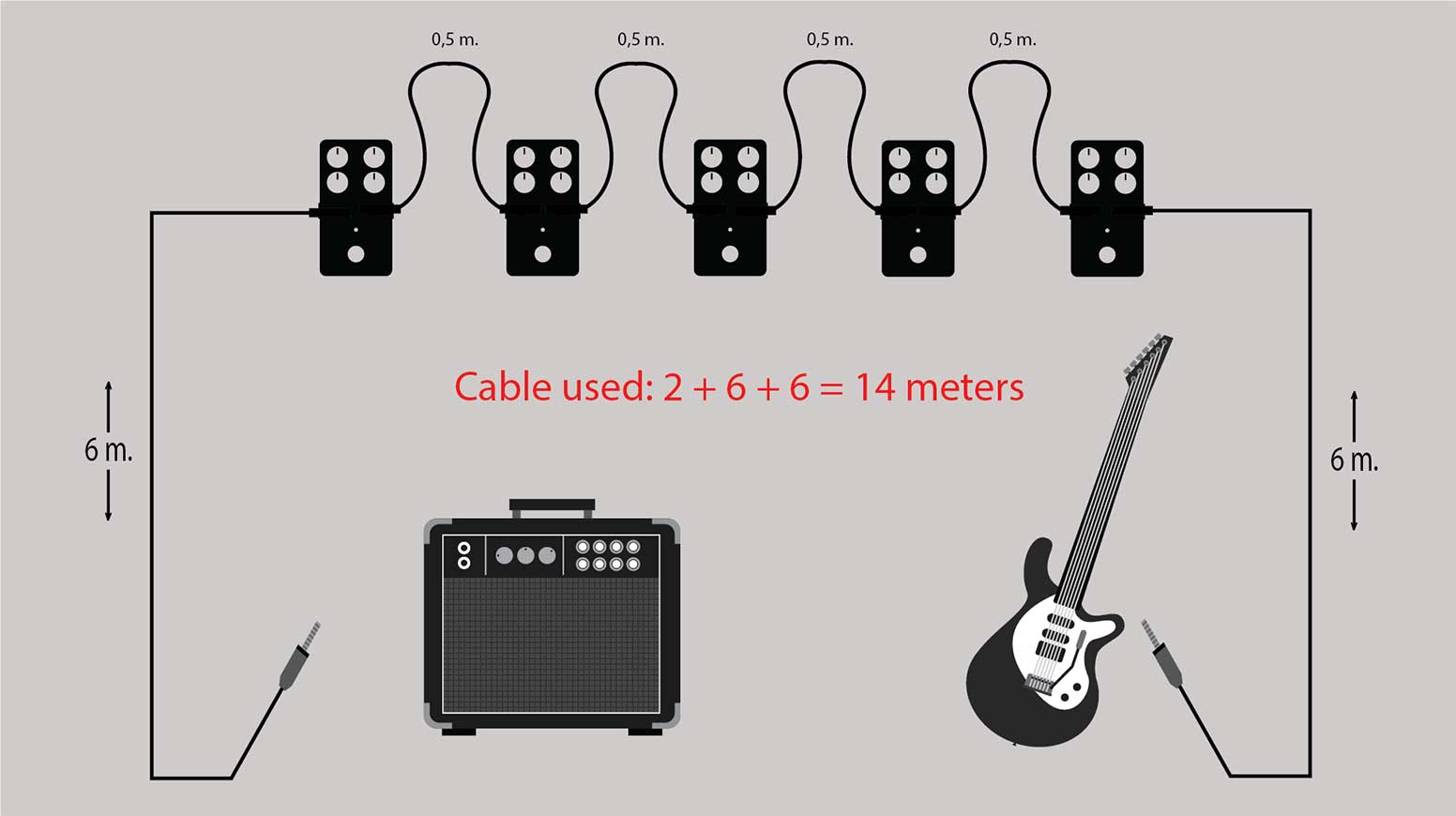
These 14 meters of cable is what your guitar will have to drive when all your Stomp Boxes are switched off. The difference between the normal 6 meters of cable and 14 meters is huge! You lose highs and dynamics – your sound is dull with 14 meters of cable compared to 6 meters.
So, what happens when you activate Stomp Box number one? – Well, now your guitar only sees 6 meters of cable, but Stomp Box number one will have to drive 8 meters of cable back to the amp.
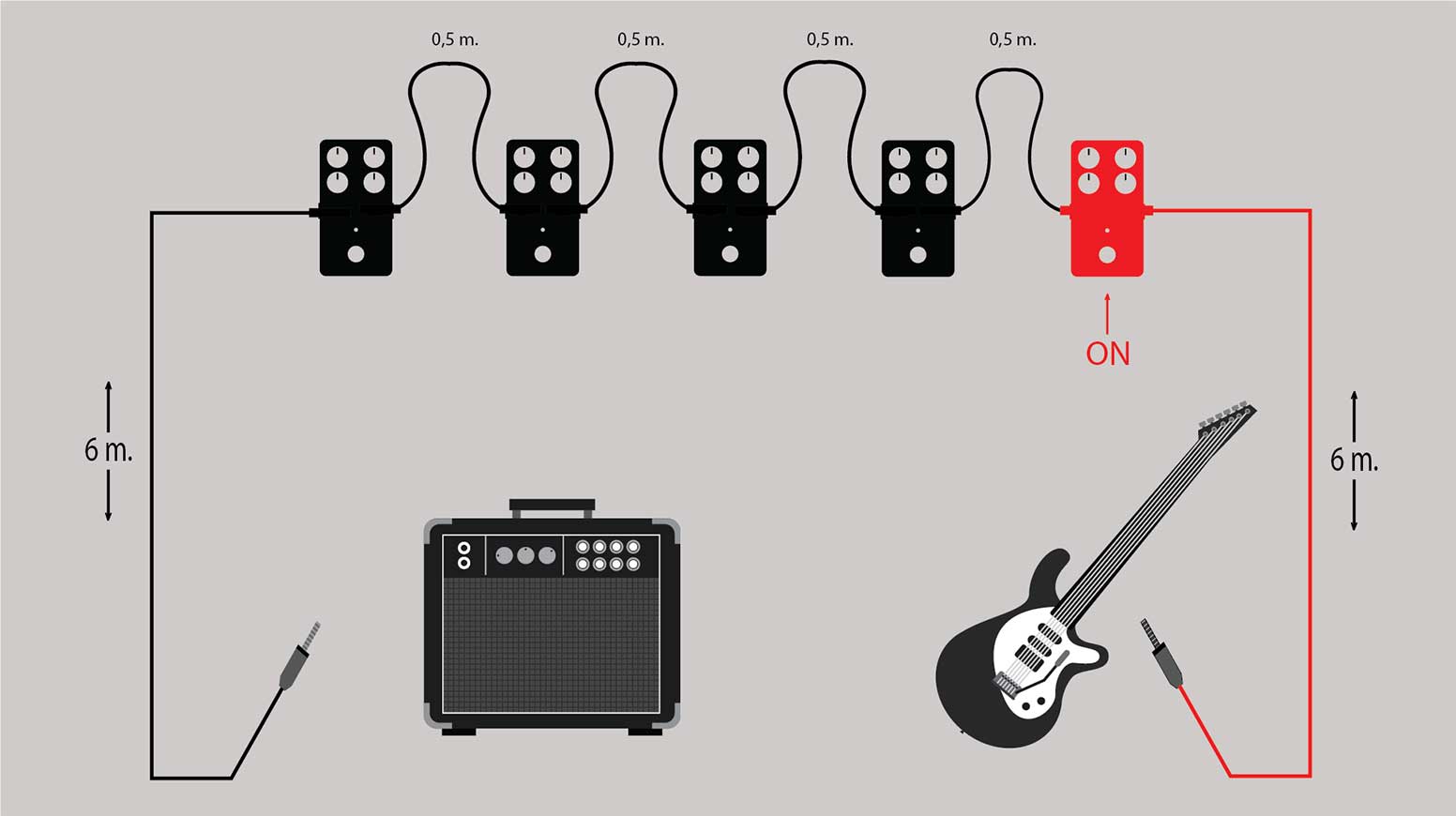
Furthermore, if that same Stomp Box has a fairly high output impedance, then it will have a negative impact on your tone. We also don’t know if the first Stomp Box has an input impedance identical to that of an amplifier – so your guitar might also see a different load = different sound.
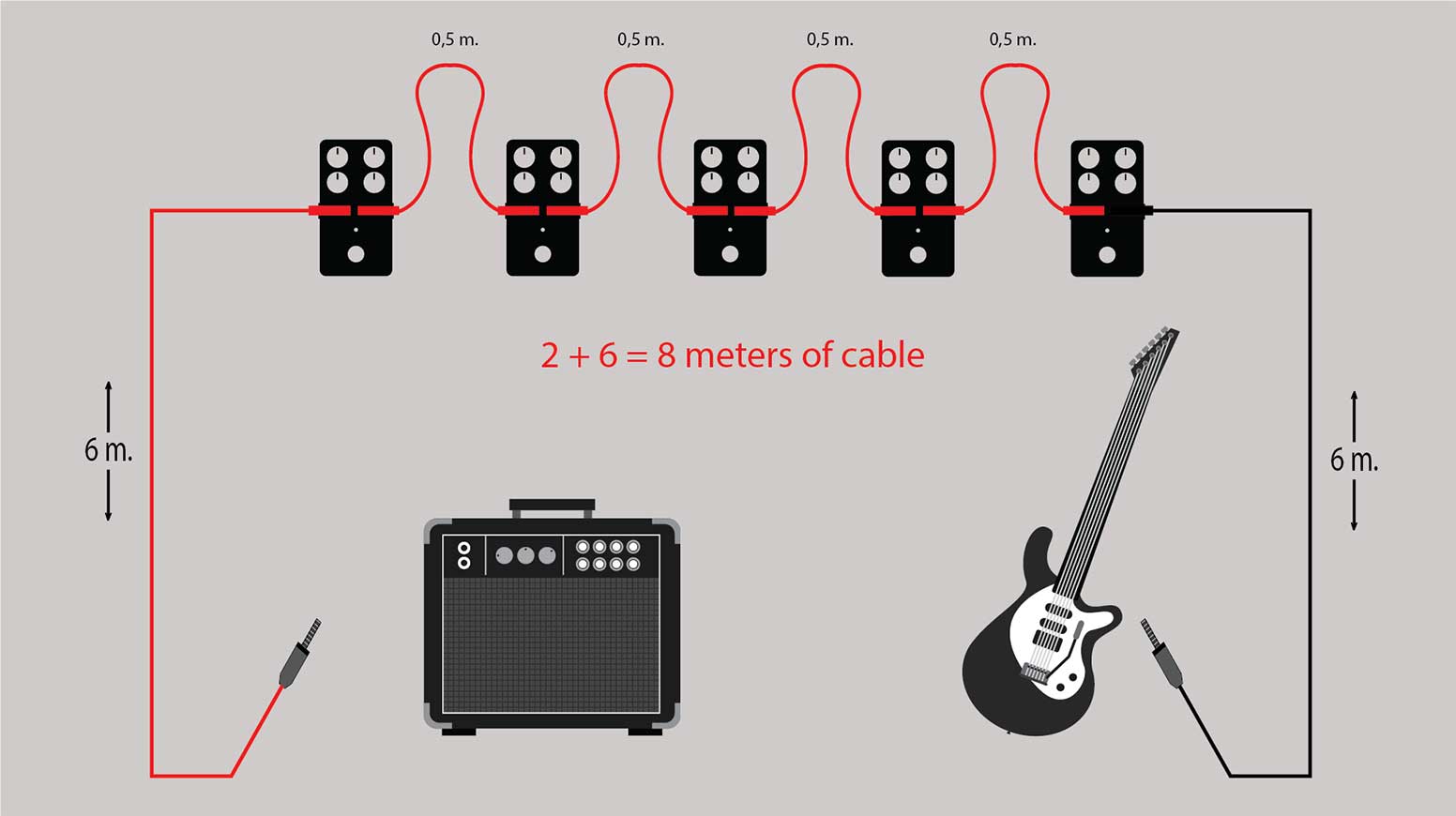
Now you decide to turn off the first Stomp Box and activate the last one. Now your guitar sees 6 meters + 2 meters of cable + the input impedance which might be very different from the first Stomp Box. In total that’s 8 meters of cable that your guitar has to drive, while the Stomp Box, that we do not know the impedance output of, has to drive 6 meters of cable back to the amp.

I hope you can see the pattern here ! Depending on what’s on and off, everything is loaded differently – and – we haven’t even touched the problem with the cross loading between the Stomp Boxes.
The first Stomp Box may have a 100 Ohm output impedance, while the second has 10.000 Ohm output impedance. This means that the third, fourth and fifth Stomp Boxes will be loaded differently, depending on which ones are switched on and off. Again – I hope you can see the pattern here !
The result of the above example is that you tonally will have total chaos on your pedalboard, when only using True Bypass Stomp Boxes.
Adding a BUF1 Dual Buffer to a pedalboard with true bypass pedals can really save your day! – But why?
Well firstly because, with a BUF1 you will take care of your guitar. By adding the BUF1 you make sure that the cable load your guitar will have to drive is constant – and the input impedance is identical to that of an amplifier.
The second buffer will take care of the cable back to the amp – so now the two main issues are taken care of.
The BUF1 will not take care of the cross loadings you have on your pedalboard, between the stomp boxes. For that you either need multiple BUF1’s to place between each Stomp Box, or the MR5 or the MR10 Loop System, which has impedance correction on every single loop.
So to make it very short, I think that true bypass is a gimmick! It makes your Stomp Boxes and your guitar sound different, due to the impedance chaos and variation.
Niklas Schneidermann
We met up with guitarist Niklas Schneidermann from Magtens Korridorer in the band's rehearsal room in Copenhagen (September ’21). He kindly showed us his rig and demonstrated some of the settings he uses, when playing live with Magtens Korridorer. Niklas' main piece of gear is his 3 channel tube amp, that he uses for three different types of overdrive sounds.
The amplifier & cabinet
Niklas is an avid Caveman Audio user and has multiple custom-made products from Steen Skrydstrup. Niklas has been playing the VOX AC50 amp for many years. Three years ago he decided to shift to the Skrydstrup TD50 Triple Drive amp. Last year Niklas tried going back to the Vox amp, but quickly realized that after playing the Skrydstrup amp, there was no turning back. - It simply sounds better!
Niklas is getting his dirt sounds from the amp, which has three levels of overdrive. Channel 1 ranges from fat and warm clean tones to gentle overdrive, Channel 2 goes from fast overdrive tones to high-gain bliss, and finally, Channel 3 takes you from a punchy-power-chord type of sound to screaming high-gain lead tones.
The Skrydstrup TD50 Triple Drive is now called Caveman Audio X3 - 3 Channel amp. The name is new, but the amp is the same. The guitar cabinet used is a Caveman Audio 412-V30 Cab.
“For the past three years, I have needed to have my Skrydstrup amplifier with me, because it just sounds fantastic - even when I play it!”
-Niklas Schneidermann (Magtens Korridorer)
Niklas’ favorite guitars
Niklas uses a variety of guitars, but mainly uses three types, when playing live with Magtens Korridorer.
His main guitar is the Fender Custom Shop Esquire Telecaster, which has an old beat up look. He also has a spare Fender Custom Shop Esquire Telecaster, this one with fancy gold paint.
Niklas’ latest edition to the guitars, is the Fender Jazzmaster Firemist gold ’65 that he purchased last year.
Also added to the guitars that will be going out on tour shortly, is the Fender Custom Shop LTD 60 Strat Relic in shell pink finish and a rare Vox Mandoguitar from the 60’s.
"Back to basics - just with great sound”
-Niklas Schneidermann (Magtens Korridorer)
Pedals & effects used live
The switching is controlled by the SC1 Midi Foot Controller from Caveman Audio. Niklas appreciates the noiseless switching he gets when using the SC1 controller, opposed to a regular pedalboard. Niklas likes to keep his setup simple and does not have a lot of pedals. These are the pedals that he uses live:
Caveman Audio TRM1 Opto Tremolo
2x Caveman Audio BOS1 Boost 28 booster pedals
Boss DD-5 Digital Delay
Strymon El Capistan Tape Echo
“The great thing about the SC1 Midi Foot Controller, opposed to using a regular pedalboard, is that you can get the sounds from all your favorite stompboxes without all the noise and the hiss”
-Niklas Schneidermann (Magtens Korridorer)
Custom-built products
Niklas is using a Skrydstrup custom-built interface in his rig. When playing live he also uses a Skrydstrup Input Selector as well as a Skrydstrup Acoustic Preamp, to make sure his acoustic guitar sounds right when playing live.


